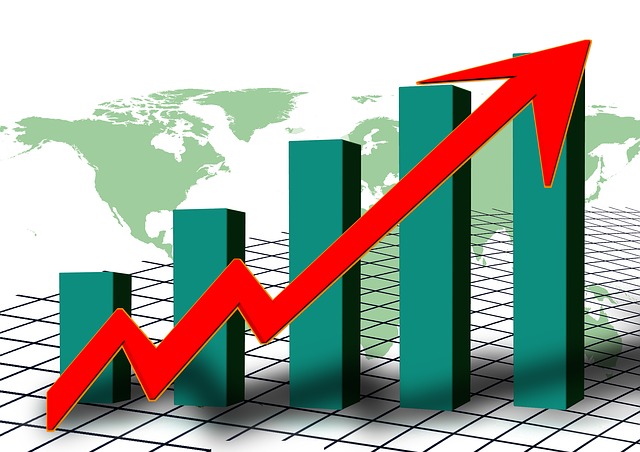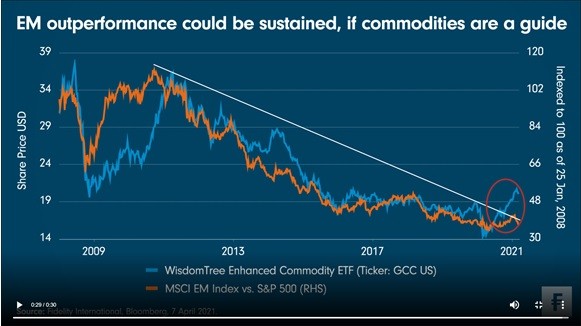Fidelity: EM outperformance could be sustained, if commodities are a guide
Fidelity: EM outperformance could be sustained, if commodities are a guide

Following a protracted period of underperformance, emerging market (EM) equities have stabilized as export and domestic data indicates accelerating demand. When we examine the EM Index versus the S&P 500 Index, it has advanced above the key downtrend line from 2010 onwards. This measure of relative strength is important because it captures the close historical correlation of EM equities with commodities. This correlation may not continue in the future, but it provides helpful context for markets today.

Emerging markets have evolved, but commodities continue to play an important role in many of those economies. In the aftermath of the global financial crisis, the world’s largest miners exercised huge restraint: capex peaked in 2012, then dropped before staging a small recovery from 2017 onwards. Then the pandemic struck, and 2020 activity was impacted by Covid-19. Supply constraints are now joined by huge stimulus and a transition to a cleaner, greener economy, driving demand up and lending support to commodity prices.
Dollar weakness lends support to EM and commodities
A sizeable US fiscal deficit could prove to be negative for the dollar and positive for both EM securities and commodities. From 2020 through 2024, the US’s total fiscal spend could approach 40 per cent of 2019 GDP. This represents a secular step change and argues for structurally low interest rates to be maintained.
We are yet to ‘escape’ the pandemic, but there are reasons to be optimistic. Vaccination programs are accelerating the world over and EMs feature some of the highest-ranking countries in terms of total doses per capita (UAE, Chile, Turkey, Poland). EM is also home to those countries that have dealt with the pandemic most effectively (China, South Korea, Taiwan). Finally, with a higher share of younger people in places like South Africa and India, a number of large EM economies will be able to vaccinate their more susceptible people in a relatively short period.
EMs continue to trade at a wide price-to-book discount to developed markets, and investor positioning is light, suggesting there may be less risk of a large correction if the optimism over vaccination programmes proves premature. As the market starts to consider a more reflationary backdrop and commodity demand rises further, ‘cheaper’, more cyclical EM stocks are likely to benefit, particularly those in emerging Europe and Latin America.
